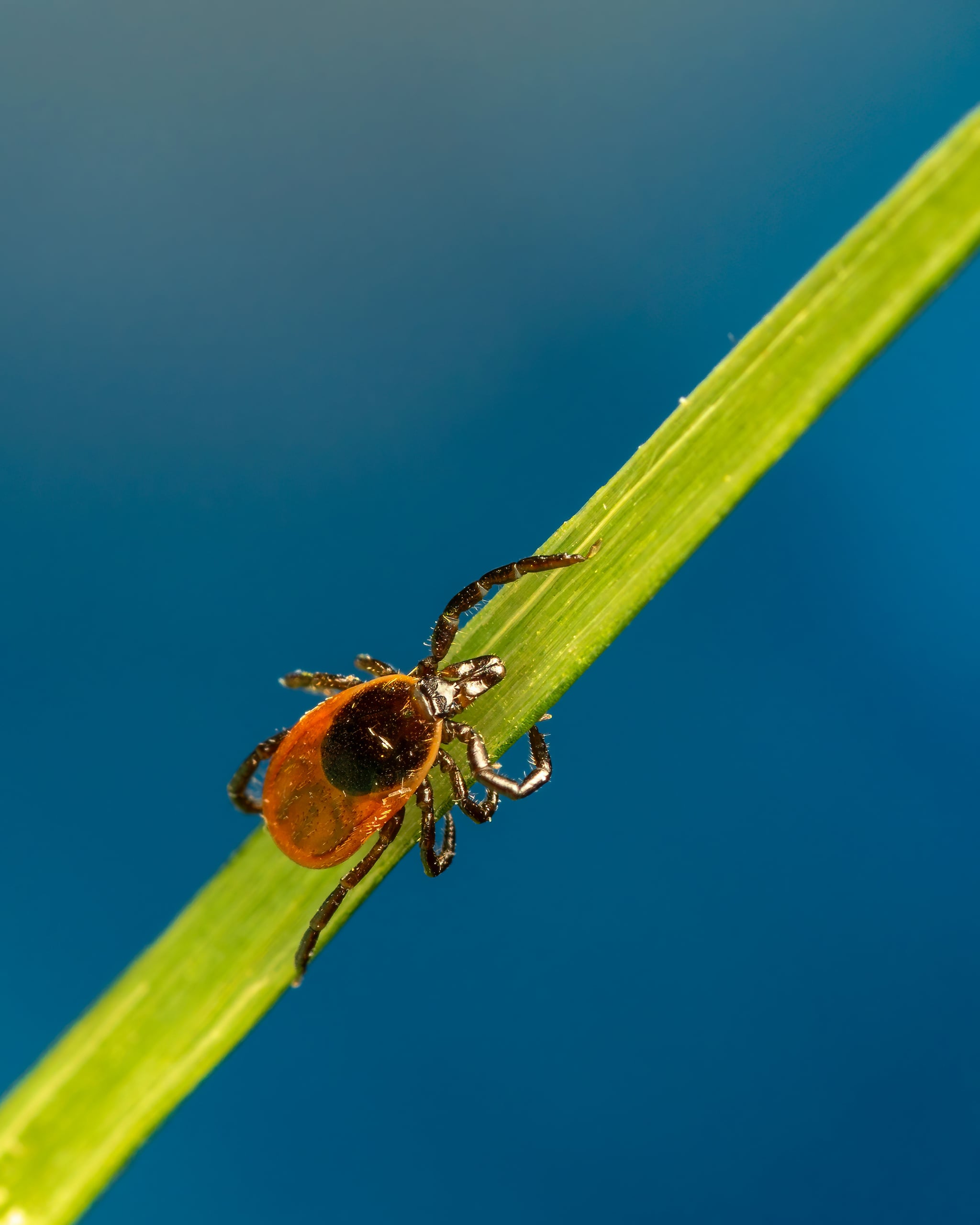A tick-borne disease known as babesiosis is on the rise in the US, according to a new report from the Centers for Disease Control and Prevention. Cases, which primarily occur in the Northeast and Midwest, more than doubled in certain Northeastern states between 2011 and 2019, the report found.
Like Lyme disease, babesiosis is an infection spread by ticks that are carrying parasites called babesia. The risk of contracting it is higher among those who’ve spent time in areas where ticks tend to lurk, such as tall grass, brush, and trees, says Amesh Adalja, MD, an infectious-disease physician and a senior scholar at the Johns Hopkins Center For Health Security. Babesiosis can be asymptomatic, but it also may lead to serious infection, especially among the elderly and immunocompromised, he explains.
There’s no vaccine to prevent babesiosis, and with springtime around the corner, it’s important to know the signs and symptoms of this tick-borne disease and how to best protect yourself.
What Is Babesiosis?
Babesiosis is a parasitic infection of the red blood cells that typically gets spread by ticks, says Christina Johns, MD, a pediatric emergency doctor and senior medical adviser at PM Pediatric Care. Not all species of babesia parasites infect humans; babesia microti is the type that’s most associated with human infection, per the CDC. And humans are most often infected with this type of parasite via a tick bite — usually a deer tick, also known as black-legged ticks, the same type that are commonly associated with Lyme disease.
Aside from direct infection by a tick, babesiosis can also spread through a contaminated blood transfusion, since there are no licensed tests that can screen donor samples for it, or passed through transmission from an infected pregnant person to their baby during pregnancy or delivery, Dr. Johns adds.
But babesiosis is not transmitted from person to person via respiratory droplets or close contact, like COVID-19, so you are not at risk if someone else is infected or presents symptoms, per the CDC.
What Are the Symptoms of Babesiosis?
Many people with babesiosis are asymptomatic. But if you do present symptoms, they typically start within a week after infection and include fever, chills, muscle aches, and headaches, Dr. Adalja says. You may also experience flu-like symptoms like nausea, fatigue, or a loss of appetite, Dr. Johns adds. In some cases, symptoms may even present a few months after infection, according to the CDC.
For those who are elderly or immunocompromised, symptoms can be severe or even deadly, Dr. Adalja says. In particular, those without a spleen are at a significantly higher risk, he adds.
Why Are Tick-Borne Diseases Spiking?
Climate change strikes again. The type of tick that carries Lyme disease and babesiosis used to be pretty localized to the Northeast and was really only a cause for concern during warmer months. That’s because ticks require temperatures of at least 45 degrees Fahrenheit to become active. But as temperatures warm up earlier, ticks are coming out of hibernation earlier as well, Dr. Johns says. In fact, ticks are actually present year-round (even in the winter), which leads to unexpected encounters when other insects are not normally a threat to humans, she explains.
They’re also spreading to states that have typically never had high numbers of ticks, according to the University of Minnesota School of Public Health.
But the increase in tick-borne diseases may also be a result of more awareness and testing, Dr. Adalja adds.
The CDC has found that most cases of babesiosis occur in the Northeast and upper Midwest, particularly in parts of New England, New York, New Jersey, Wisconsin, and Minnesota. In the Northeast, babesiosis can occur in both inland and coastal areas.
How Do Babesiosis and Lyme Disease Compare?
While babesiosis is caused by a parasite, Lyme disease is an illness caused by borrelia bacteria, and humans are usually infected from the bite of a tick carrying the bacteria, according to the Mayo Clinic.
If you’re immunocompromised, especially for those without a spleen, babesiosis may be fatal, whereas Lyme disease is rarely as severe, Dr. Adalja says. What’s more, “because it’s often asymptomatic, babesiosis can cause issues down the road if it’s transmitted to other people through blood transfusions or congenitally,” Dr. Johns says.
Both are treatable. Babesiosis is typically treated with a combination of a prescription antiparasitic/antifungal and an antibiotic; Lyme disease calls for antibiotics alone (but it can sometimes be difficult to treat and lead to long-tail symptoms).
In short: neither infection is something you’d want, and it’s important to try to practice tick safety and avoid both entirely. Which brings us to . . .
How to Protect Yourself From Babesiosis
There’s no vaccine to prevent babesiosis, so prevention consists of minimizing your exposure to ticks, Dr. Johns says. “If you’re out in nature or next to trees or bushes, wear long-sleeve shirts, pants, and socks, and apply a bug repellent with up to 30 percent DEET that is designed to ward off ticks,” she says.
It’s also best to walk on cleared trails to minimize contact with leaf litter, brush, or overgrown grass where ticks tend to live. “Make sure to also do regular and thorough tick checks once you are indoors, because the earlier a tick is spotted and removed, the smaller the risk of infection, Dr. Johns adds.
If you have recently been outside and experience babesiosis symptoms, visit your doctor immediately. They’ll likely take a blood sample and examine it under a microscope for babesia parasites inside the red blood cells.
How Is Babesiosis Treated?
If you’re diagnosed with babesiosis, the treatment consists of a combination of prescription antibiotics and antiparasitic agents, Dr. Johns says. Treatment usually lasts for seven to 10 days.
If you’re asymptomatic, however, you may not need treatment, according to the CDC — but talk to your doctor about what it means and whether, for instance, you should avoid donating blood for a period of time.
